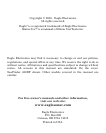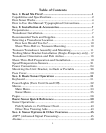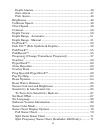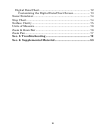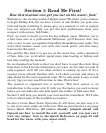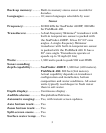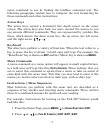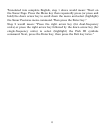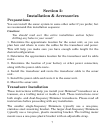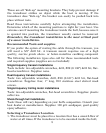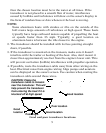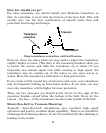
4
Speed/distance log:....... Optional (requires optional speed sensor).
NOTICE!
The storage temperature range for your unit is from -4 degrees to +167
degrees Fahrenheit (-20 degrees to +75 degrees Celsius). Extended
storage in temperatures higher or lower than specified will damage the
liquid crystal display in your unit. This type of damage is not covered by
the warranty. For more information, contact the factory's Customer
Service Department; phone numbers are listed on the last page.
How Sonar Works
Sonar has been around since the 1940s, so if you already know how it
works, skip ahead to the next segment on the typographical conventions
used in this manual. But, if you've never owned a sonar fish finder, this
segment will tell you the under water basics.
Sonar is an abbreviation for SOund NA
vigation and Ranging, a
technology developed during World War II for tracking enemy
submarines. A sonar consists of a transmitter, transducer, receiver and
display. In simple terms, here's how it finds the bottom, or the fish:
The transmitter emits an electrical impulse, which the transducer
converts into a sound wave and sends into the water. (The sound
frequency can't be heard by humans or fish.) The sound wave strikes an
object (fish, structure, bottom) and bounces back to the transducer,
which converts the sound back into an electrical signal.
The receiver amplifies this return signal, or echo, and sends it to the
display, where an image of the object appears on the scrolling sonar
chart. The sonar's microprocessor calculates the time lapse between the
transmitted signal and echo return to determine the distance to the
object. The whole process repeats itself several times each second.
How to use this manual: typographical conventions
Many instructions are listed as numbered steps. The keypad and arrow
"keystrokes" appear as boldface type. So, if you're in a real hurry (or
just need a reminder), you can skim the instructions and pick out what



